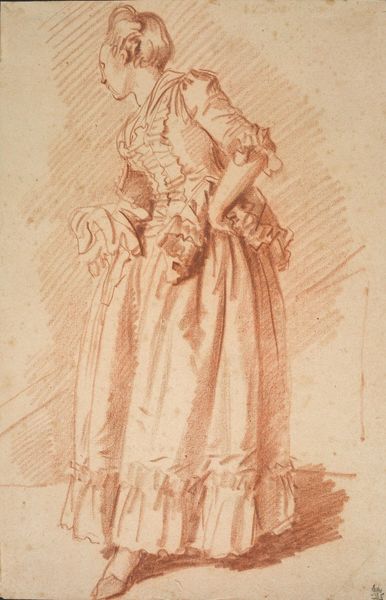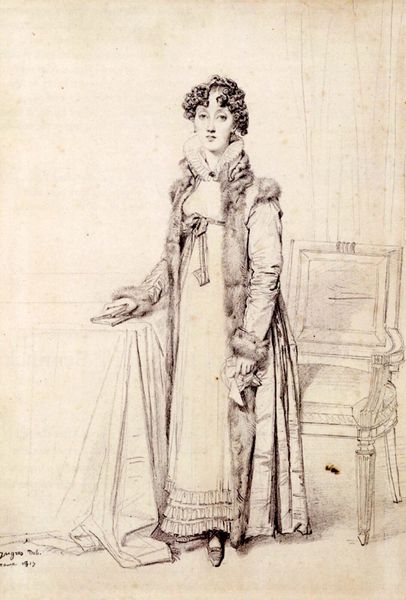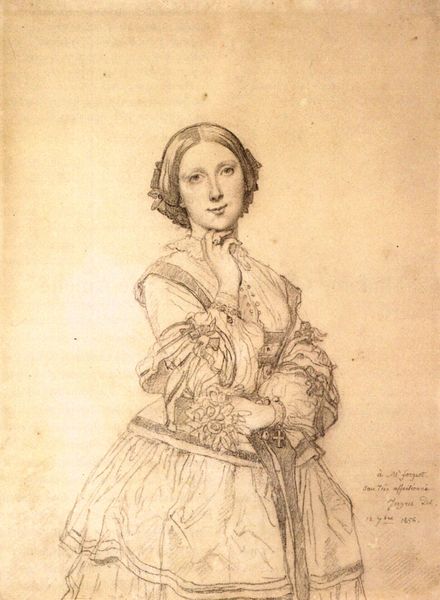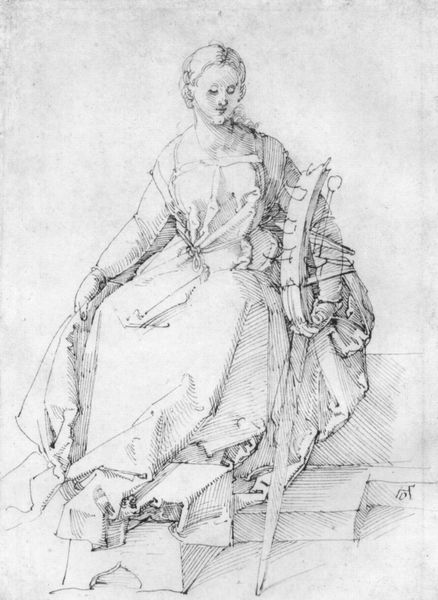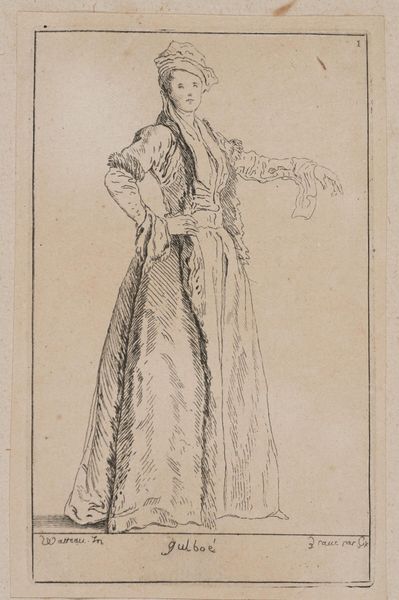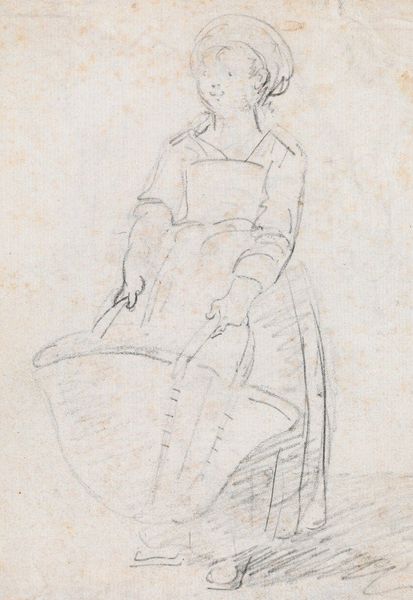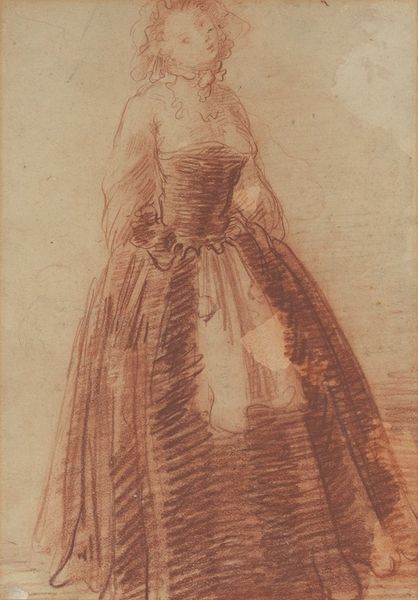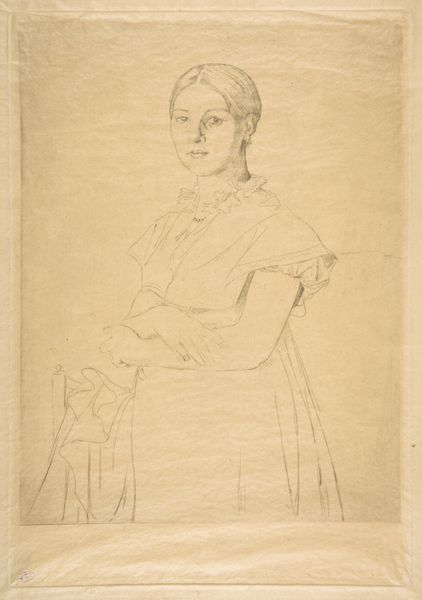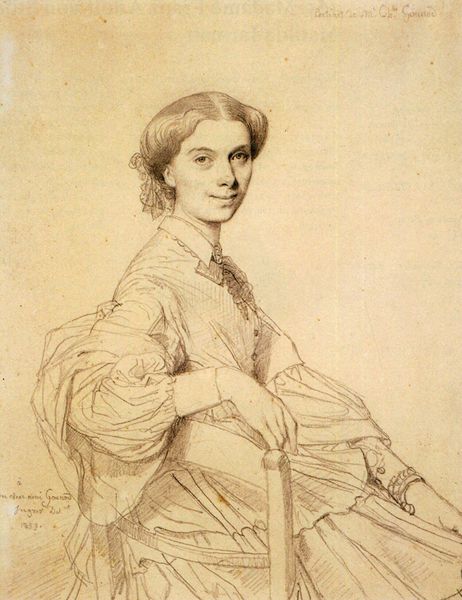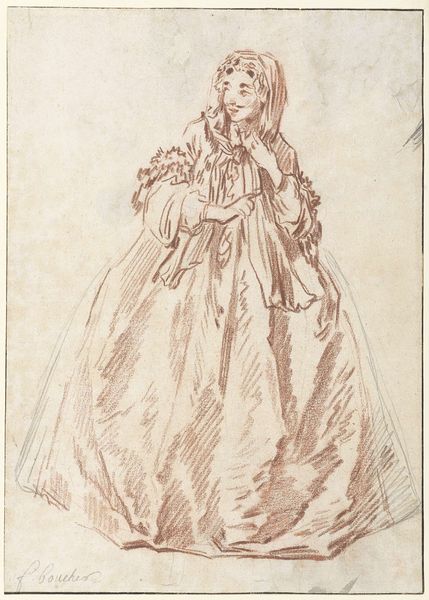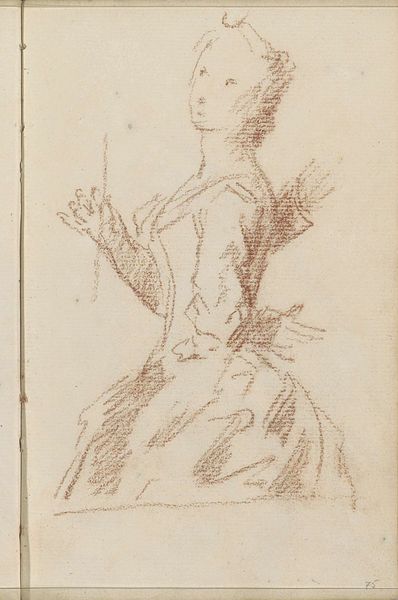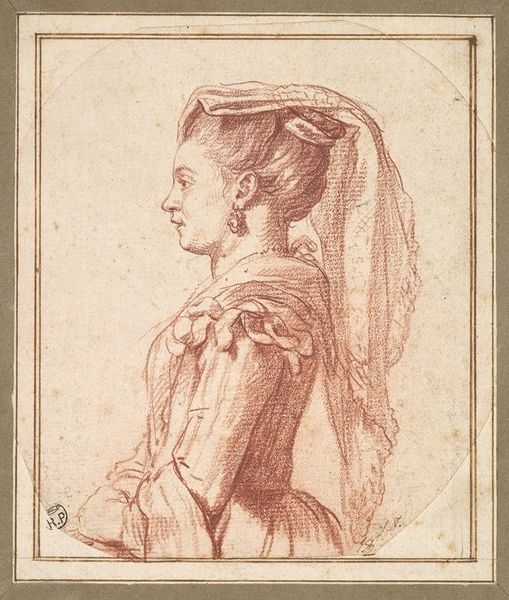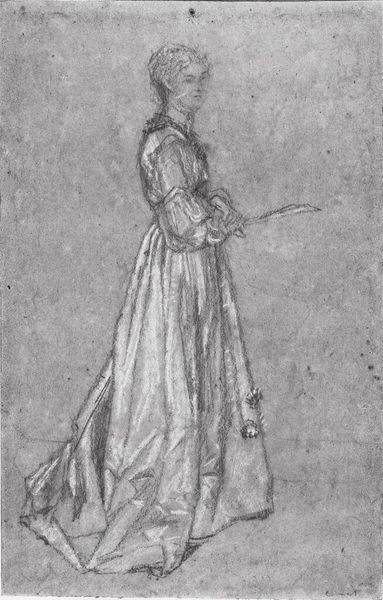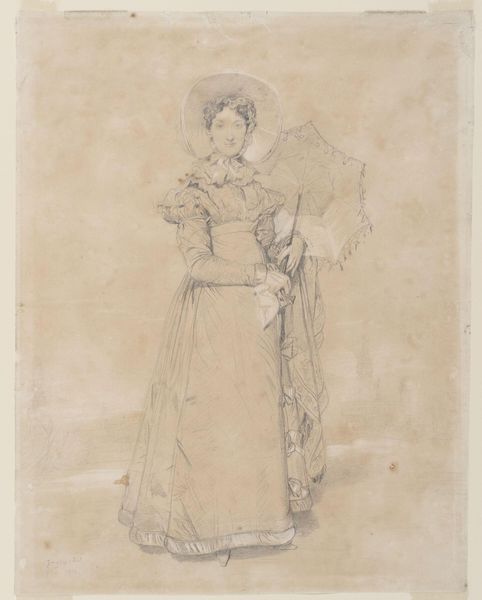
Madame Jacquelles Louis Leblanc, born Françoise Poncelle
0:00
0:00
jeanaugustedominiqueingres
Private Collection
drawing, pencil
#
portrait
#
drawing
#
neoclacissism
#
pencil sketch
#
charcoal drawing
#
pencil
#
academic-art
Copyright: Public domain
Curator: Ingres’ pencil drawing, “Madame Jacquelles Louis Leblanc, born Françoise Poncelle,” is an exquisite example of neoclassical portraiture. Editor: There's a stillness about this piece. It's quite elegant but somehow fragile too, in both subject and medium. I sense a controlled emotion in her stance. Curator: Let’s consider the materiality: pencil on paper. It allows for a directness, a visible trace of the artist’s hand and the application of labor in constructing the image. The detail in the dress—the ruffles, the gathering—all meticulously rendered, suggesting not just wealth, but the value placed on presenting it through garments. Editor: And who was this woman, Madame Leblanc? It’s key to remember her lived experiences would greatly inform how she was perceived and presented in art, which in this time and culture often favored certain demographics. This ties into notions of female agency, power, and societal expectations of women in portraiture. It speaks to how women's identities are often filtered and controlled within artistic representations. Curator: Indeed, and one can imagine Ingres himself working within those structures, using his considerable technical skills to translate the social status into a physical representation via readily available graphite and processed wood pulp. Even the act of sitting for a portrait, for both artist and subject, speaks to a material transaction of labor, status, and consumption of both time and resources. Editor: Viewing it with modern eyes, I feel a resonance with themes around social class, and the economics that undergird our very understanding of identity today, not just regarding Madame Leblanc, but about the means and structures of art production itself. It makes you wonder how Madame Leblanc and Ingres viewed issues such as inequality and marginalization and whether or not the artist explored how her race, class, or sexual identity affected her experience of the world. Curator: Considering that material lineage of pencil drawing alongside those sociocultural aspects you rightly highlight allows for multiple layers of interpretation. Editor: Exactly, prompting dialogues about representation and social power, hopefully making the experience of engaging with this drawing more thought-provoking.
Comments
No comments
Be the first to comment and join the conversation on the ultimate creative platform.
